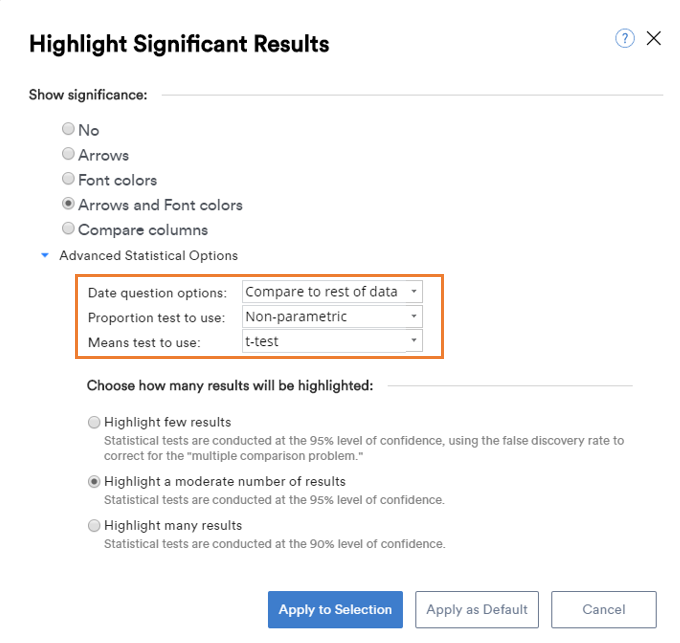
How To... | Market Research Topics | Using Displayr
A Change in Displayr’s Default Stat Tests for Numeric Data

We've released some new options in Displayr for customizing control over stat testing, and at the same time.
Additional options
If you go into Appearance > Highlight Results > Advanced there are now three new options:
- Date controls whether testing is conducted against the previous time period or not. See Make Stat Tests Compare to Previous Time Periods.
- Proportions test and Means test govern which rules are used when determining which statistical tests to use. These rules choose the tests contingent upon the structure of the data. Choices available include non-parametric, z-tests, t-tests, and Quantum and Survey Reporter tests. See Statistical tests for categorical and numeric data on the Q wiki for additional information.
Means test for numeric data now defaults to t-test
Previously, our Means tests to use for numeric data have been non-parametric. In particular, for independent samples, Displayr has been testing using a Kruskal-Wallis test, and for correlated samples Friedman's test for correlated samples.
Now that users can change the options for statistical testing, we've changed the Means test to use to the more powerful t-tests for independent and paired samples respectively.





